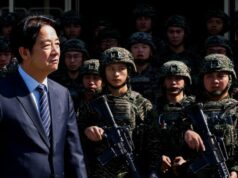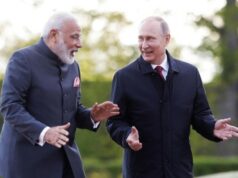Quad leaders hosted by President Joe Biden in Wilmington, Delaware may have left unresolved the issue of institutionalising the grouping, by setting up a headquarters with a secretariat to better implement decisions.
But key decisions taken at the meeting indicate the direction is towards more convergence with focus on working jointly against terrorism and countering disinformation, more cyber collaboration and of course the military sphere.
The rather grandly titled Wilmington Declaration laid out in the joint statement says that beginning next year, coast guard personnel of Australia, Japan and India will spend time on a US Coast Guard vessel operating in the Indo-Pacific. Designated the Quad-at-sea Ship Observer Mission, it is intended to improve interoperability and advance maritime safety.
In the same vein, the Quad Ports of the Future Partnership will harness the grouping’s expertise “to support sustainable and resilient port infrastructure development across the Indo-Pacific”.
Mumbai will host the inaugural Regional Ports & Transportation Conference next year. The idea is to coordinate, exchange information, share best practices with partners and leverage resources to mobilize government and private sector investment in quality port infra across the Indo-Pacific.
The Quad also announced an Indo-Pacific Logistics Network, a pilot project to “pursue shared airlift capacity among the four nations and leverage collective logistics strengths”, to support civilian response to natural disasters.
Investments by Quad partners will see all Pacific-island countries achieve primary telecom capability by the end of 2025, the MEA fact sheet added.
As part of the effort to improve undersea cable networks, Australia launched a Cable Connectivity & Resilience Centre two months ago, to develop workshops, policy and regulatory assistance across the region.
The US is investing over $3 million in expanding its existing capacity building programmes for telecom officials and executives from 25 Indo-Pacific states. India is studying the expansion of undersea cable maintenance and repair capabilities in the Indo-Pacific.
The Quad plans to invest an initial $7.5 million in Empowering Innovations in NextGen Agriculture (a project announced last year). On AI and Advanced Communication, the Quad has launched two Track 1.5 dialogues to promote international standardisation cooperation.
Quad partners will invest an initial $2 million on how to use AI to study and analyse biological ecosystems in their countries. The idea is to identify and treat disease, develop resilient crops and generate clean energy.
This effort will be underpinned by the forthcoming Quad Principles for R&D Collaborations in Critical & Emerging Technologies.
Quad leaders also welcomed the finalisation of a memorandum of cooperation for the Semiconductor Supply Chains Contingency Network to tackle supply chain risks.
The Quad Investors Network (QUIN) launched last year, is supporting 10 major strategic investments among the partners in critical minerals, renewable energy, cybersecurity and aerospace. QUIN is also backing a startup campus at Japan’s Chiba Institute of Technology, Center for Radical Transformation.
A QUIN backed venture accelerator with the University of Tokyo will “fuel technological advancement”. Also, QUIN developed Quantum Center of Excellence has produced a report highlighting how each partner’s quantum ecosystem can work collectively with the others.
There are initiatives in clean energy including the US giving Tata Power a loan of $250 million to set up a solar cell facility and $500 million to First Solar to operate a solar module manufacturing facility.
Thirty eight years in journalism, widely travelled, history buff with a preference for Old Monk Rum. Current interest/focus spans China, Technology and Trade. Recent reads: Steven Colls Directorate S and Alexander Frater's Chasing the Monsoon. Netflix/Prime video junkie. Loves animal videos on Facebook. Reluctant tweeter.




